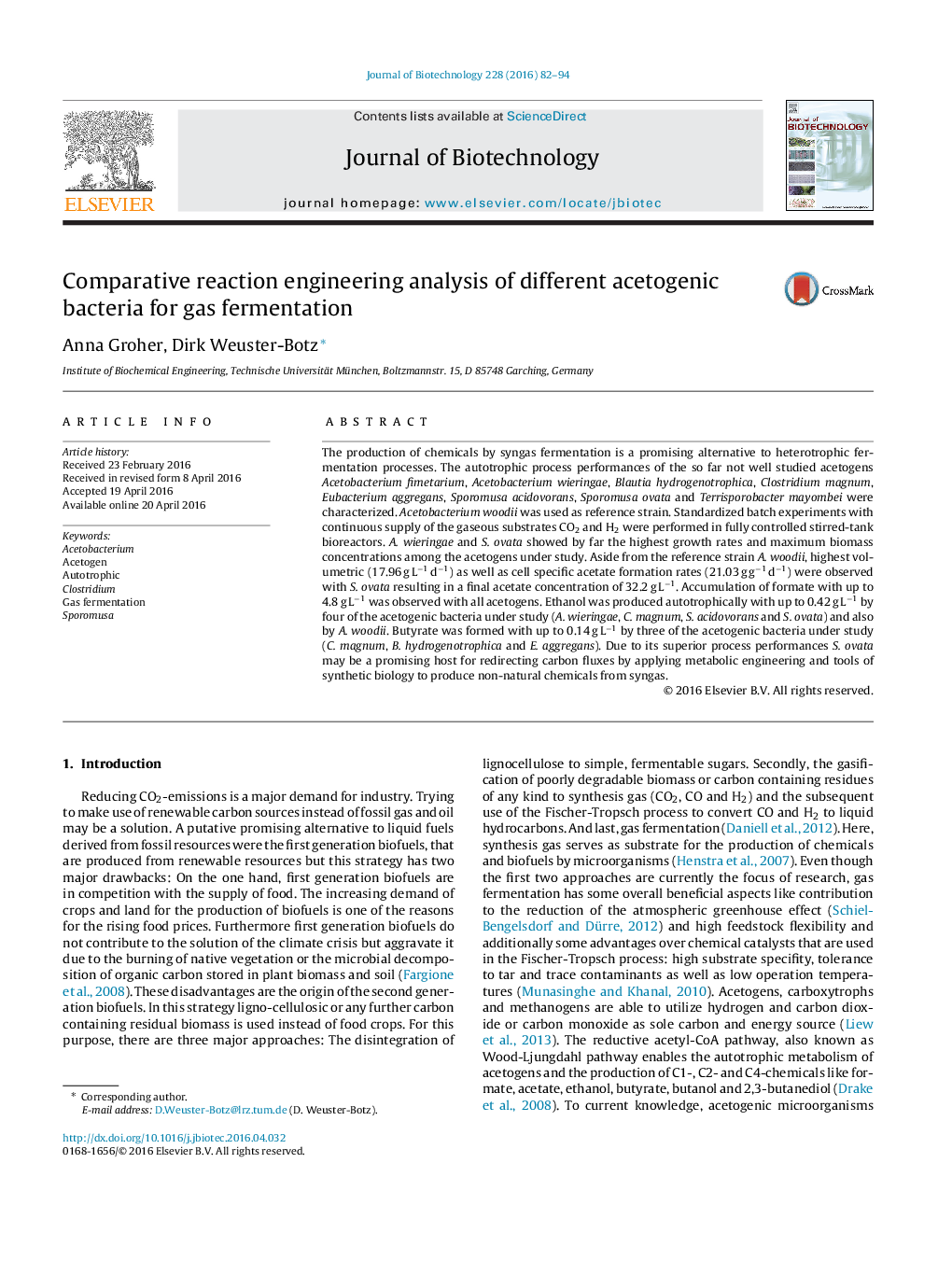| Article ID | Journal | Published Year | Pages | File Type |
|---|---|---|---|---|
| 6490528 | Journal of Biotechnology | 2016 | 13 Pages |
Abstract
The production of chemicals by syngas fermentation is a promising alternative to heterotrophic fermentation processes. The autotrophic process performances of the so far not well studied acetogens Acetobacterium fimetarium, Acetobacterium wieringae, Blautia hydrogenotrophica, Clostridium magnum, Eubacterium aggregans, Sporomusa acidovorans, Sporomusa ovata and Terrisporobacter mayombei were characterized. Acetobacterium woodii was used as reference strain. Standardized batch experiments with continuous supply of the gaseous substrates CO2 and H2 were performed in fully controlled stirred-tank bioreactors. A. wieringae and S. ovata showed by far the highest growth rates and maximum biomass concentrations among the acetogens under study. Aside from the reference strain A. woodii, highest volumetric (17.96 g Lâ1 dâ1) as well as cell specific acetate formation rates (21.03 g gâ1 dâ1) were observed with S. ovata resulting in a final acetate concentration of 32.2 g Lâ1. Accumulation of formate with up to 4.8 g Lâ1 was observed with all acetogens. Ethanol was produced autotrophically with up to 0.42 g Lâ1 by four of the acetogenic bacteria under study (A. wieringae, C. magnum, S. acidovorans and S. ovata) and also by A. woodii. Butyrate was formed with up to 0.14 g Lâ1 by three of the acetogenic bacteria under study (C. magnum, B. hydrogenotrophica and E. aggregans). Due to its superior process performances S. ovata may be a promising host for redirecting carbon fluxes by applying metabolic engineering and tools of synthetic biology to produce non-natural chemicals from syngas.
Related Topics
Physical Sciences and Engineering
Chemical Engineering
Bioengineering
Authors
Anna Groher, Dirk Weuster-Botz,
